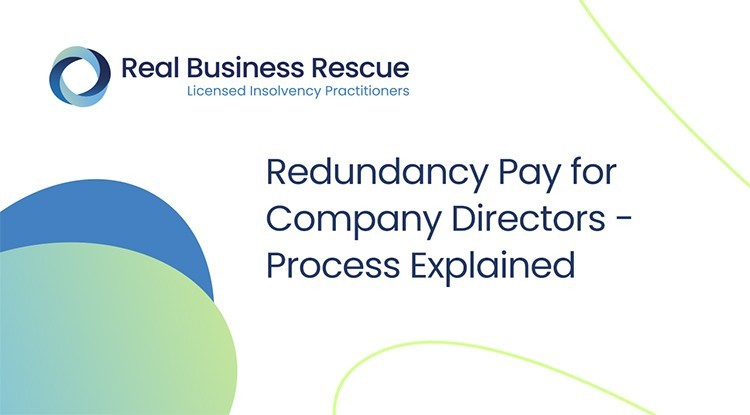If a Company Goes Bust Who Pays Redundancy? Lawful Insights for UK Employees
If a Company Goes Bust Who Pays Redundancy? Lawful Insights for UK Employees
Blog Article
Assessing the Systems of Company Redundancy and Its Impact on Staff Member Spirits
The devices behind the decision-making processes leading to worker redundancies can have far-reaching impacts on spirits within a company. By checking out the detailed interplay between firm scaling down approaches, staff member responses, and business durability, a clearer image arises of the intricate dancing between company requirements and human feelings.

Influence of Business Redundancy on Morale
The significant rise in firm redundancies has had a profound effect on staff member morale in recent months. As companies browse economic obstacles, the choice to downsize or reorganize operations typically results in increased levels of unpredictability and anxiousness among employees. The anxiety of shedding one's job, paired with the enhanced work for staying staff, can develop a difficult workplace that wets morale.
Employees who witness their coworkers being laid off might experience survivor regret, really feeling grateful for their very own position while additionally coming to grips with feelings of unhappiness and insecurity. This psychological turmoil can adversely affect performance and engagement, as people struggle to focus among the upheaval.
Additionally, the absence of openness surrounding the redundancy process can better erode depend on and confidence in business management. if a company goes bust who pays redundancy. When employees really feel unenlightened or overlooked throughout such rough times, their commitment to the company decreases, and spirits plummets
Variables Resulting In Company Downsizing
Among economic unpredictabilities, companies often encounter the difficult job of determining and resolving essential aspects that demand downsizing their operations. One significant aspect bring about company downsizing is monetary instability. When a firm experiences economic difficulties such as decreasing earnings, enhancing expenses, or extreme financial obligation, scaling down might come to be an essential action to guarantee the company's sustainability. Technical advancements also play a vital duty in company scaling down. Automation and the adoption of more effective processes can result in a reduced requirement for human labor, resulting in workforce reductions. Market variations and adjustments in customer choices are added variables that can activate scaling down initiatives. Companies have to adapt to advancing market conditions to remain affordable, and this occasionally entails restructuring operations and decreasing labor force dimension. Moreover, procurements and mergings can bring about redundancies, triggering companies to scale down to remove overlapping functions and improve operations. Overall, a mix of monetary challenges, technological changes, market dynamics, and business adjustments often drive companies in the direction of scaling down as a calculated choice.
Approaches for Reducing Unfavorable Impacts
Elements leading to firm downsizing necessitate the application of tactical procedures aimed at mitigating the adverse impacts on both the organization and its staff members. Clear communication aids workers comprehend the factors behind the redundancy, lessens uncertainty, and lowers anxiousness.
One more important strategy is to focus on employee health during and after the scaling down period. This consists of offering accessibility to therapy services, producing a helpful setting for those continuing to be in the company, and using opportunities for upskilling or retraining to boost their employability. Furthermore, rewarding the commitment and identifying and hard job of employees that stay can help keep motivation and prevent a decline in spirits. By applying these methods, firms can browse scaling down with more empathy and mitigate the unfavorable impact on worker spirits.
Staff Member Durability In The Middle Of Redundancy
Browsing via durations of redundancy, employees are commonly called for to show resilience in the face of business changes. Employee strength among redundancy describes the ability of individuals to adapt, cope, and recuperate from the difficulties presented by possible work loss. This durability can show up in different means, such as preserving a positive attitude, looking for out brand-new chances, upskilling, and networking to improve employability.
Durable employees typically display a growth way of thinking, watching problems as short-lived and concentrating on discovering and development. They are positive in managing their emotions, looking for support when needed, and keeping a feeling of positive outlook about the future. Additionally, durable staff members are most likely to embrace modification, see it as a chance for personal and expert growth, and remain committed to their profession development regardless of the unpredictability produced by redundancy.
Organizations can support employee durability via clear communication, supplying Related Site accessibility to sources for upskilling and retraining, using job counseling solutions, and identifying and awarding workers that demonstrate durability throughout tough times. By fostering a society of strength, companies can aid staff members navigate redundancy better and arise stronger from the experience.
Structure an Encouraged Workforce Post-Redundancy
In the results of business restructuring and employee durability amidst redundancy, promoting a determined workforce ends up being vital for the business's future success and staff member health. Building an inspired labor force post-redundancy needs a tactical strategy that focuses on rebuilding count on, boosting morale, and re-engaging staff members. Interaction plays a crucial role in this process, as open and transparent dialogue can assist staff members comprehend the reasons behind the redundancies and the business's vision relocating ahead.
Offering opportunities for employee growth and growth is one more crucial facet of building a determined workforce post-redundancy. Using training programs, mentorship opportunities, and career innovation prospects can aid workers feel valued and purchased their future within the company - if a company goes bust who pays redundancy. Identifying and compensating workers for their payments, especially during challenging times, can additionally boost spirits and inspiration

Conclusion
In verdict, business redundancy can have a substantial effect on employee morale, bring about lowered motivation and work satisfaction. Comprehending the aspects that add to downsizing and implementing techniques to alleviate unfavorable effects is important for preserving worker durability throughout challenging times. By fostering an encouraging workplace and offering chances for professional growth, business can reconstruct an inspired labor force post-redundancy.
The considerable boost in firm redundancies has actually had a profound influence on worker morale in that site recent months. By carrying out these strategies, firms can browse scaling down with even more compassion and reduce the unfavorable influence on staff member morale.
In the aftermath of business restructuring and staff member resilience among redundancy, cultivating an inspired labor force becomes critical for the firm's future success and staff member well-being. Interaction plays a pivotal role in this procedure, as open and clear discussion can aid staff members comprehend the factors behind the redundancies and the business's vision moving forward.
In final thought, firm redundancy can have a significant influence on employee morale, leading to reduced read this motivation and job contentment. (if a company goes bust who pays redundancy)
Report this page